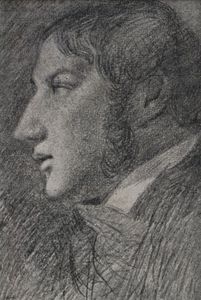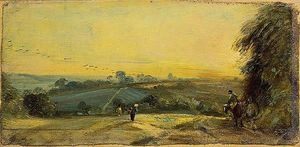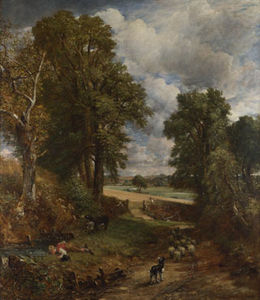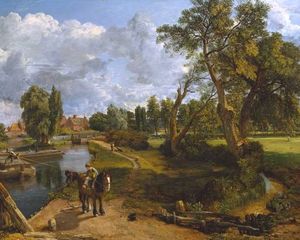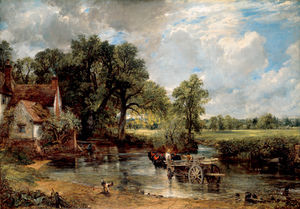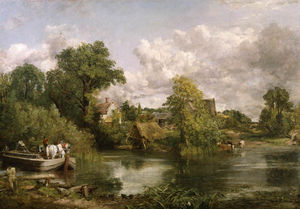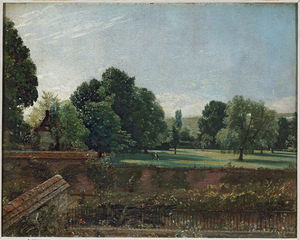John Constable Style and Technique
- Full Name:
- John Constable
- Short Name:
- Constable
- Date of Birth:
- 11 Jun 1776
- Date of Death:
- 31 Mar 1837
- Focus:
- Paintings
- Mediums:
- Oil, Watercolor
- Subjects:
- Landscapes
- Art Movement:
- Romanticism
- Hometown:
- East Bergholt, United Kingdom
- John Constable Style and Technique Page's Content
- Introduction
- Style
- Method
Introduction
Rebelling against the contemporary ideal of landscape as a background for a historical or mythological scene, Constable was one of the first artists of the Romantic Movement to view landscapes for their own beauty. His techniques and methods of capturing natural light and movement were innovative and still inspire artists to this day.
John Constable Style
Subject Matter:
Constable will for ever be associated with the Suffolk countryside and natural landscapes dotted with scenes of agricultural work. During his career he never let what was considered "popular art" take over his canvases or detract from his own opinions on art.
His natural views of an idealized English countryside soon became popular as they reminded people living in the ever more industrialized towns and cities, of the rural pastures which many of them had grown up in.
Composition:
Constable's compositions were dictated by what he saw in front of him and the nature of the English countryside. He would obviously choose the direction with which he painted a scene, but he was so dedicated to the true beauty of nature that it is unlikely he would have compromised his realism for a better composition.
In most of his work Constable used symmetrical compositions or scenes that focused on either a manmade building such as a mill, church or cottage, or a body of water, such as lakes or the River Stour.
These structures break up what otherwise may have been monotonous green fields and trees and allowed the artists to bring more colors into his palette.
Brushstroke:
Constable admitted himself to having a somewhat vanguard style compared to many of his contemporaries. His use of broad and naturalistic brushstroke was frowned upon by The Royal Academy and did not earn him many patrons in England.
This Impasto technique however, went on to be developed by The Impressionists of the late 19th and early 20th centuries.
Color palette:
Until Constable became popular many landscape artist used what is known as coffee colors to create their works, especially the great Dutch masters who's works were considered to be the epitome of good landscape painting.
Again Constable's challenging and often stubborn nature led him to rebel against this convention, using natural tones and vibrant greens to match the colors he saw in the countryside.
He even argued that the browns of classical landscapes were in fact down to the varnish used on those canvases and it may have been the intention of the masters to use vivid colors originally.
Use of light:
Constable had to create new techniques to give the realistic appearance of flowing water and wind blowing through trees. By layering reds with the greens of his trees, the artist was able to create this depth in a way which had never been done before.
Not only this, but the reds added a vibrancy to the trees, something that was missing from classical landscapes.
Similarly, Constable used white highlights to illuminate water moving against people and agricultural equipment. This gave the impression of sunlight reflecting in the image, enhancing the realism of many of Constable's paintings.
John Constable Method
Unlike many of his contemporaries Constable painted from nature rather than thinking up a composition in his minds eye prior to beginning a piece. He was excited by the prospect of ever changing nature and the way that no view ever looked the same from one day to the next.
Often completing primary sketches prior to starting a large canvas, Constable would draw on the inspiration nature gave him and try to capture a moment in time, testing his composition first in oil and pencil sketches.
Such sketches would be produced in a grid formation so that they could be accurately scaled up when the artist started to work on larger canvases at a later date.
As a young boy Constable would also spend hours sketching clouds in what he referred to as his "skying" sessions. This development and skill is evident in his later works as the artist perfectly recreates cloud formations and sunlight.

